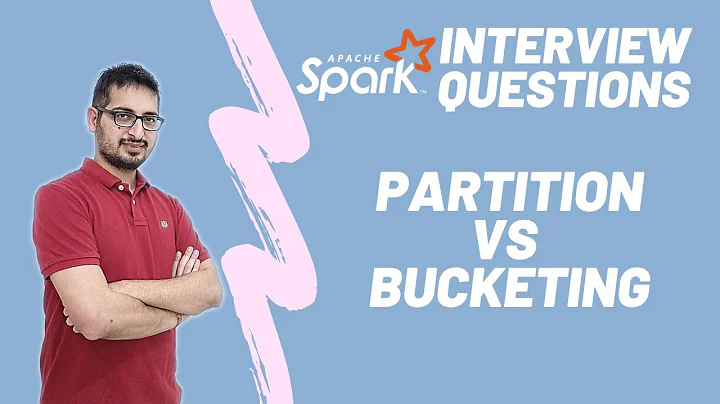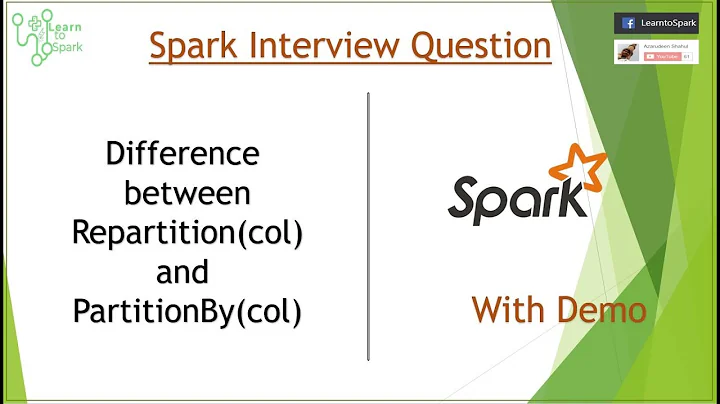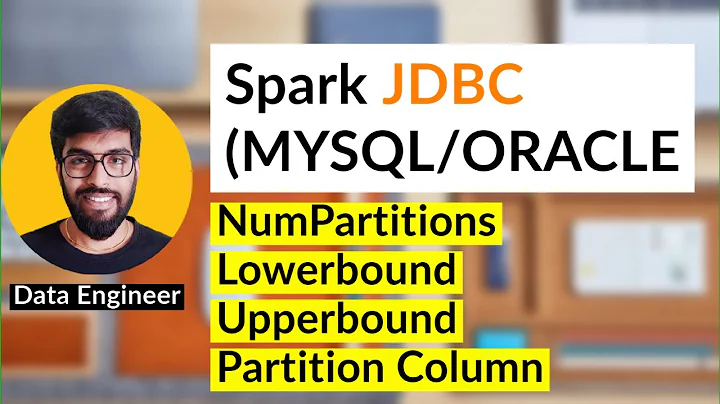Spark: Difference between numPartitions in read.jdbc(..numPartitions..) and repartition(..numPartitions..)
Short answer: There is (almost) no difference in behaviour of numPartitions parameter in the two methods
read.jdbc(..numPartitions..)
Here, the numPartitions parameter controls:
-
number of parallel connections that would be made to the
MySQL(or any otherRDBM) for reading the data intoDataFrame. -
Degree of parallelism on all subsequent operations on the read
DataFrameincluding writing to disk untilrepartitionmethod is invoked on it
repartition(..numPartitions..)
Here numPartitions parameter controls the degree of parallelism that would be exhibited in performing any operation of the DataFrame, including writing to disk.
So basically the DataFrame obtained on reading MySQL table using spark.read.jdbc(..numPartitions..) method behaves the same (exhibits the same degree of parallelism in operations performed over it) as if it was read without parallelism and the repartition(..numPartitions..) method was invoked on it afterwards (obviously with same value of numPartitions)
To answer to exact questions:
If I read DataFrame via DataFrameReader.jdbc and then write it to disk (without invoking repartition method), then would there still be as many files in output as there would've been had I written out a DataFrame to disk after having invoked repartition on it?
Yes
Assuming that the read task had been parallelized by providing appropriate parameters (columnName, lowerBound, upperBound & numPartitions), all operations on the resulting DataFrame including write will be performed in parallel. Quoting the official docs here:
numPartitions: The maximum number of partitions that can be used for parallelism in table reading and writing. This also determines the maximum number of concurrent JDBC connections. If the number of partitions to write exceeds this limit, we decrease it to this limit by calling coalesce(numPartitions) before writing.
Yes: Then is it redundant to invoke repartition method on a DataFrame that was read using DataFrameReader.jdbc method (with numPartitions parameter)?
Yes
Unless you invoke the other variations of repartition method (the ones that take columnExprs param), invoking repartition on such a DataFrame (with same numPartitions) parameter is redundant. However, I'm not sure if forcing same degree of parallelism on an already-parallelized DataFrame also invokes shuffling of data among executors unnecessarily. Will update the answer once I come across it.
Related videos on Youtube
y2k-shubham
"A Big-Shot is a Little-Shot who keeps on Shooting, So keep Trying" - Dr. APJ Abdul Kalam, [Wings of Fire] My Bio Science Lover Introvert Technology Enthusiast Know me Web: y2k-shubham About.Me: y2k-shubham Connect with me GitHub: y2k-shubham Disqus: y2k_shubham . LinkedIn: y2k-shubham Twitter: y2k_shubham . Instagram: y2k.shubham Facebook: y2k.shubham
Updated on June 04, 2022Comments
-
 y2k-shubham almost 2 years
y2k-shubham almost 2 yearsI'm perplexed between the behaviour of
numPartitionsparameter in the following methods:DataFrameReader.jdbcDataset.repartition
The official docs of
DataFrameReader.jdbcsay following regardingnumPartitionsparameternumPartitions: the number of partitions. This, along with lowerBound (inclusive), upperBound (exclusive), form partition strides for generated WHERE clause expressions used to split the column columnName evenly.
And official docs of
Dataset.repartitionsayReturns a new Dataset that has exactly
numPartitionspartitions.
My current understanding:
- The
numPartitionparameter inDataFrameReader.jdbcmethod controls the degree of parallelism in reading the data from database - The
numPartitionparameter inDataset.repartitioncontrols the number of output files that will be generated when thisDataFramewould be written to disk
My questions:
- If I read
DataFrameviaDataFrameReader.jdbcand then write it to disk (without invokingrepartitionmethod), then would there still be as many files in output as there would've been had I written out aDataFrameto disk after having invokedrepartitionon it? - If the answer to the above question is:
- Yes: Then is it redundant to invoke
repartitionmethod on aDataFramethat was read usingDataFrameReader.jdbcmethod (withnumPartitionsparameter)? - No: Then please correct the lapses in my understanding. Also in that case shouldn't the
numPartitionsparameter ofDataFrameReader.jdbcmethod be called something like 'parallelism'?
- Yes: Then is it redundant to invoke







